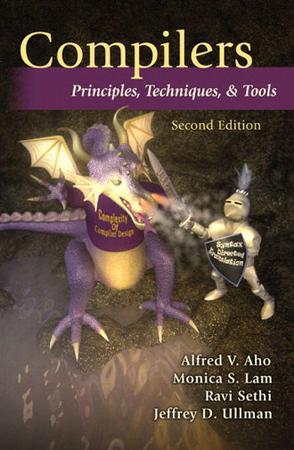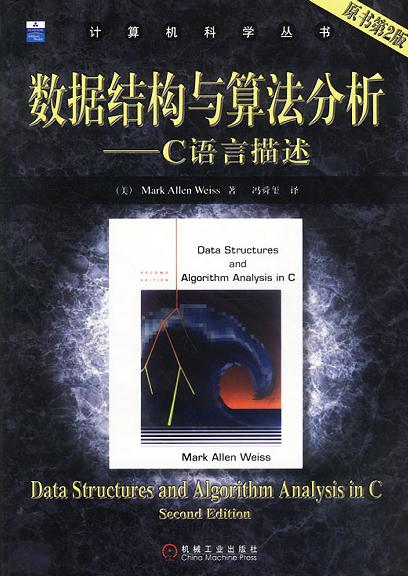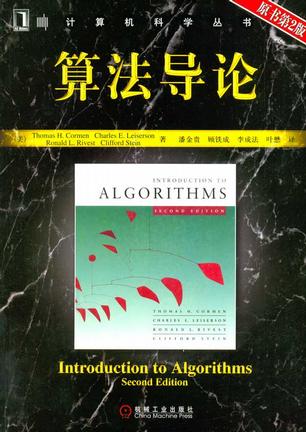Compilers
内容简介
This book provides the foundation for understanding the theory and pracitce of compilers. Revised and updated, it reflects the current state of compilation. Every chapter has been completely revised to reflect developments in software engineering, programming languages, and computer architecture that have occurred since 1986, when the last edition published. The authors, recognizing that few readers will ever go on to construct a compiler, retain their focus on the broader set of problems faced in software design and software development. Computer scientists, developers, and aspiring students that want to learn how to build, maintain, and execute a compiler for a major programming language.
......(更多)
作者简介
Alfred V. Aho是哥伦比亚大学的Lawrence Gussman计算机科学教授。Aho教授多次获奖,其中包括哥伦比亚校友会颁发的2003年度Great Teacher奖和电子与电器工程师协会的Jonh von Neumann奖章。他是美国国家工程院院士,以及ACM和IEEE的会员。
Monica S. Lam是斯坦福大学的计算机科学教授。她曾经是Tensilica的首席科学家,并且是moka5的创建者和首席执行官。她领导了SUIF项目。该项目开发了最流行的研究性编译器之一,并首创了很多在工业界得到应用的编译技术。
Ravi Sethi发起了Avaya公司的研究组织,并且是Avaya实验室的主管。之前他曾经是Bell实验室的高级副总裁,并且是Lucent科技的通信软件的首席技术官。他曾经在Pennsylvania州立大学和Arizona大学拥有教职,并在Priceton大学和Rutgers大学任教。他是ACM的会员。
Jeffery D. Ullman是Gradiance公司的首席执行官和Standford大学的Stanford W. Ascherman计算机科学(名誉退休)教授。他的研究兴趣包括数据库理论、数据库集成、数据挖掘和利用信息基础软件的教育技术。他是美国国家工程院的院士,ACM的会员,并且是Karlstrom奖和Knuth奖的获得者。
......(更多)
目录
1 Introduction
1.1 Language Processors
1.2 The Structure of a Compiler
1.3 The Evolution of Programming Languages
1.4 The Science of Building a Compiler
1.5 Applications of Compiler Technology
1.6 Programming Language Basics
1.7 Summary of Chapter 1
1.8 References for Chapter 1
2 A Simple Syntax-Directed Translator
2.1 Introduction
2.2 Syntax Definition
2.3 Syntax-Directed Translation
2.4 Parsing
2.5 A Translator for Simple Expressions
2.6 Lexical Analysis
2.7 Symbol Tables
2.8 Intermediate Code Generation
2.9 Summary of Chapter 2
3 Lexical Analysis
3.1 The Role of the Lexical Analyzer
3.2 Input Buffering
3.3 Specification of Tokens
3.4 Recognition of Tokens
3.5 The Lexical-Analyzer Generator Lex
3.6 Finite Automata
3.7 From Regular Expressions to Automata
3.8 Design of a Lexical-Analyzer Generator
3.9 Optimization of DFA-Based Pattern Matchers
3.10 Summary of Chapter 3
3.11 References for Chapter 3
4 Syntax Analysis
4.1 Introduction
4.2 Context-Free Grammars
4.3 Writing a Grammar
4.4 Top-Down Parsing
4.5 Bottom-Up Parsing
4.6 Introduction to LR Parsing: Simple LR
4.7 More Powerful LR Parsers
4.8 Using Ambiguous Grammars
4.9 Parser Generators
4.10 Summary of Chapter 4
4.11 References for Chapter 4
5 Syntax-Directed Translation
5.1 Syntax-Directed Definitions
5.2 Evaluation Orders for SDD's
5.3 Applications of Syntax-Directed Translation
5.4 Syntax-Directed Translation Schemes
5.5 Implementing L-Attributed SDD's
5.6 Summary of Chapter 5
5.7 References for Chapter 5
6 Intermediate-Code Generation
6.1 Variants of Syntax Trees
6.2 Three-Address Code
6.3 Types and Declarations
6.4 Translation of Expressions
6.5 Type Checking
6.6 Control Flow
6.7 Backpatching
6.8 Switch-Statements
6.9 Intermediate Code for Procedures
6.10 Summary of Chapter 6
6.11 References for Chapter 6
7 Run-Time Environments
7.1 Storage Organization
7.2 Stack Allocation of Space
7.3 Access to Nonlocal Data on the Stack
7.4 Heap Management
7.5 Introduction to Garbage Collection
7.6 Introduction to Trace-Based Collection
7.7 Short-Pause Garbage Collection
7.8 Advanced Topics in Garbage Collection
7.9 Summary of Chapter 7
7.10 References for Chapter 7
8 Code Generation
8.1 Issues in the Design of a Code Generator
8.2 The Target Language
8.3 Addresses in the Target Code
8.4 Basic Blocks and Flow Graphs
8.5 Optimization of Basic Blocks
8.6 A Simple Code Generator
8.7 Peephole Optimization
8.8 Register Allocation and Assignment
8.9 Instruction Selection by Tree Rewriting
8.10 Optimal Code Generation for Expressions
8.11 Dynamic Programming Code-Generation
8.12 Summary of Chapter 8
8.13 References for Chapter 8
9 Machine-Independent Optimizations
9.1 The Principal Sources of Optimization
9.2 Introduction to Data-Flow Analysis
9.3 Foundations of Data-Flow Analysis
9.4 Constant Propagation
9.5 Partial-Redundancy Elimination
9.6 Loops in Flow Graphs
9.7 Region-Based Analysis
9.8 Symbolic Analysis
9.9 Summary of Chapter 9
9.10 References for Chapter 9
10 Instruction-Level Parallelism
10.1 Processor Architectures
10.2 Code-Scheduling Constraints
10.3 Basic-Block Scheduling
10.4 Global Code Scheduling
10.5 Software Pipelining
10.6 Summary of Chapter 10
10.7 References for Chapter 10
11 Optimizing for Parallelism and Locality
11.1 Basic Concepts
11.2 Matrix Multiply: An In-Depth Example
11.3 Iteration Spaces
11.4 Affine Array Indexes
11.5 Data Reuse
11.6 Array Data-Dependence Analysis
11.7 Finding Synchronization-Free Parallelism
11.8 Synchronization Between Parallel Loops
11.9 Pipelining
11.10 Locality Optimizations
11.11 Other Uses of Affine Transforms
11.12 Summary of Chapter 11
11.13 References for Chapter 11
12 Interprocedural Analysis
12.1 Basic Concepts
12.2 Why Interprocedural Analysis?
12.3 A Logical Representation of Data Flow
12.4 A Simple Pointer-Analysis Algorithm
12.5 Context-Insensitive Interprocedural Analysis
12.6 Context-Sensitive Pointer Analysis
12.7 Datalog Implementation by BDD's
12.8 Summary of Chapter 12
12.9 References for Chapter 12
A A Complete Front End
A.1 The Source Language
A.2 Main
A.3 Lexical Analyzer
A.4 Symbol Tables and Types
A.5 Intermediate Code for Expressions
A.6 Jumping Code for Boolean Expressions
A.7 Intermediate Code for Statements
A.8 Parser
A.9 Creating the Front End
B Finding Linearly Independent Solutions
Index
......(更多)
读书文摘
标识符 a 是一个代表了表达式 (x + 1) 的宏。但 x 到底是什么呢?我们不能够静态地解释 x 。
......(更多)






